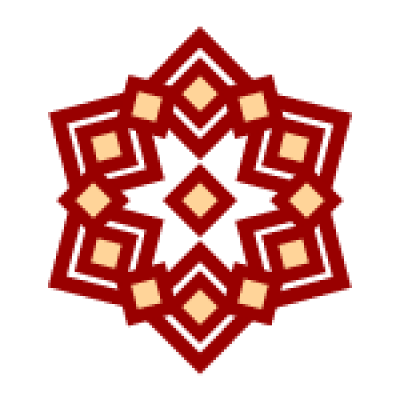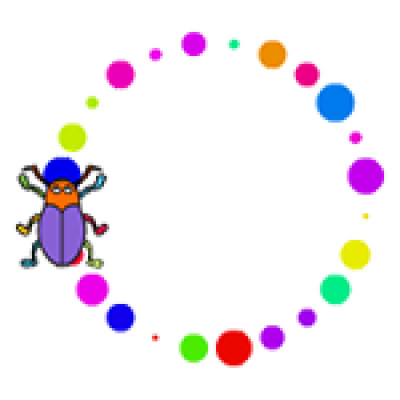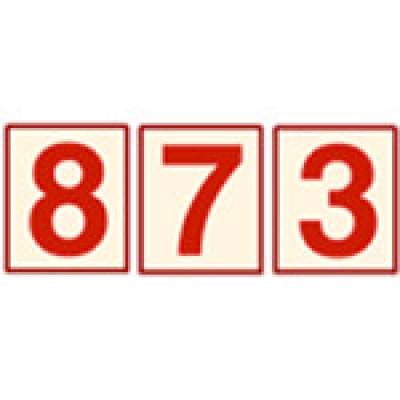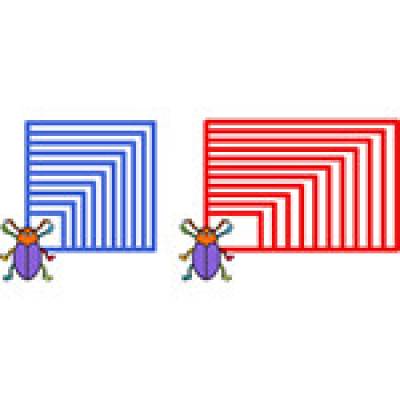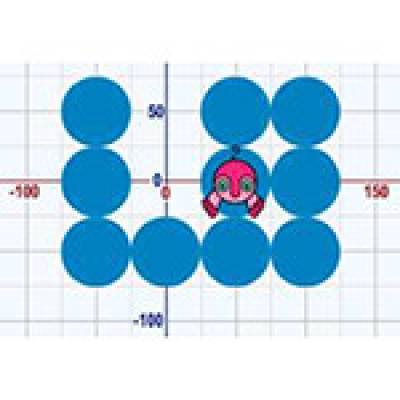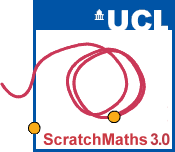
UCL ScratchMaths is designed to be worked on over two years, with three modules of activities per year. The materials have been developed in collaboration between teachers and researchers, with the majority of activities tested and refined in our "design schools", where our activities were tested in classrooms. This development was informed by response to feedback during professional development.
All curriculum materials developed through the SM project are freely available to download below.
There have been many people who have contributed to the development and testing of the ScratchMaths curriculum materials including:
- The UCL Knowledge Lab team: Professor Richard Noss, Professor Dame Celia Hoyles, Professor Ivan Kalas, Piers Saunders, Dr Laura Benton, Johanna Carvajal and Professor Dave Pratt
- Design Schools: Monique Darrell and Granton Primary School, Craig Cairns and Eleanor Palmer Primary School, Conor Loughney and Justin Bioletti and Torriano Junior School, Gemma-Louise Blair and Beccy Doak and Hill Mead Primary School.
- Local Coordinators: Gareth Griffiths, Jill Gosnay, Joe Halloran, Julia Briggs, Katie John, Paul Scott and Ruth Trundley.
We have had a lot of positive feedback from the teachers who have been involved in the trial and are already using the ScratchMaths materials:
" "ScratchMaths is enabling us to work efficiently to deliver both mathematics investigative learning as well as coding in a way that matches suitable levels of scaffold and challenge in both disciplines." - Year 5 Teacher, Devon
" "My pupils have enjoyed using ScratchMaths and as a teacher it has been great to know that the children are receiving high quality provision" - Year 6 Teacher, Somerset
" "The children really enjoyed the ScratchMaths lessons. I feel it had a positive affect on their attitudes to Maths" - Year 5 Teacher, Cheshire
- Curriculum overview
The curriculum provides a high-quality solution for fulfilling these requirements for pupils aged 9-11 years for the following reasons:
- Explicit links with mathematics helps fit content into a busy teaching timetable by addressing important curriculum objectives in mathematics and computing as well as having suggested cross-curricular links with other subjects
- Programming in schools has been shown to have the potential to develop higher levels of mathematical thinking in relation to aspects of number and mathematical abstraction as well as problem solving abilities.
- Draws on alternative representations for challenging mathematical ideas providing a different approach for pupils who struggle to access mathematical concepts in the traditional ways.
- Over 40 hours of materials, including extensive challenges for gifted and talented pupils as well as suggested adaptations for lower attainers.
ScratchMaths Curriculum overview (pdf)
Each module comprises of a set of downloadable curriculum resources, which include the following:
- Teacher Materials: contains detailed information about the module including curriculum links, step-by-step activity instructions, additional support and example scripts, unplugged printable worksheets and pupil assessments.
- Classroom Presentations: editable presentations designed for displaying activity instructions and discussion questions on the classroom interactive whiteboard and written in pupil friendly language
- Scratch Starter Projects: each activity begins with a specially developed Scratch starter project, which includes specifically chosen sprite(s) and pre-prepared blocks and scripts.
- Challenge, Reference and Vocabulary Posters: a series of useful printable posters to display in the classroom, including further extension activities for pupils who are keen to build on the skills they have developed during the module.
- Year 5 Modules (1-3)
The Y5 Modules are structured by the key concepts within the computing curriculum, with the explicit links to the mathematics curriculum made throughout.
The theme of Module 1 is repeating patterns and starts with the very basics of programming in Scratch. This module introduces pupils to the key computational concepts of sequencing, repetition, algorithms, debugging and definitions as well as linking to symmetry, angles and negative numbers through building repeated patterns.
Module 2 is focused around creating different drawings using the pen tool such roman numerals and regular polygons, introducing pupils to initialisation, expressions and randomness as well as consolidating earlier concepts.
Module 3 is based around the building of interactive behaviours between multiple sprites firstly using conditions and then broadcasting, introducing multiple actors and parallel behaviours as well as linking to coordinates, multiplication and factors.
- Year 6 Modules (4-6)
The Y6 Modules are structured by central and frequently challenging concepts within the mathematics curriculum, with the explicit links to both the computing curriculum and the Y5 content made throughout.
Module 4: Building with Numbers
Module 4 is focused around exploring place value and requires pupils to use their knowledge of broadcasting to build place value models within several different contexts.
Module 5: Exploring Mathematical Relationships
Module 5 is focused around exploring different types of mathematical relationships including proportionality and ratio as well as introducing the concept of variable.
Module 6: Coordinates and Geometry
Module 6 explores coordinates across all four quadrants and requires pupils to use their knowledge of variable to explore scale.
- Professional Development
Professional development is a key component of the ScratchMaths curriculum as it encompasses not only the learning content but also a particular pedagogical approach, which we call the 5Es and is described briefly below.
Ideally, all teachers will have the opportunity to participate in the ScratchMaths PD events organised by one of our partners who have been involved in the project for several years and are experienced in providing PD sessions that appropriately prepare teachers to deliver ScratchMaths within their classrooms. In you are interested in attending ScratchMaths PD please get in contact with your nearest ScratchMaths PD provider.
Explore
Learning through exploration enables pupils to deal with different constraints and ambiguity through employing skills such as iterative thinking, problem solving and creativity. We therefore advocate the provision of opportunities to investigate key ScratchMaths ideas and try things out as well as to experiment with different strategies for debugging.
Explain
A crucial aspect of understanding ideas is being able to explain what has been learned and articulating the reasons behind a chosen approach. This helps with clarifying ideas, simply expressing them explicitly as well as in answering questions from peers. We encourage the incorporation of reflective questions and opportunities for discussion with others about the ideas that pupils have been exploring during ScratchMaths lessons.
Envisage
It is important to have a goal in mind when building a computer program and to predict what the outcome might be before trying it out. We believe in providing opportunities for the consideration of a program goal and encouragement to predict potential outcomes when using different strategies to realise this goal.
Exchange
Collaborating and sharing is a powerful way to learn. This allows you to 'decentre', while trying to see a problem from another's perspective as well as defend your own approach and compare it with others. We suggest the inclusion of meaningful opportunities to share and build on others' ideas, whilst acknowledging the on-going development of collaboration skills and providing appropriate scaffolding for these activities.
bridgE
To make connections between programming and mathematics the ideas developed through Scratch programming have to be re-contextualised and re-built in the language of mathematics. We recommend any links with conventional mathematics to be made explicit during the activities and also for the provision of opportunities to re-contextualise their learning in an environment outside of Scratch.
- Technical Setup
The ScratchMaths curriculum is designed for Scratch 3.0.
You can choose whether to use Scratch online (through the scratch.mit.edu website) or offline by downloading the offline editor from: https://scratch.mit.edu/download.
You are able to request a Scratch teacher account to help you manage your pupils online accounts https://scratch.mit.edu/educators/#teacher-accounts. If you decide to use online Scratch we would still recommend that you have offline Scratch installed on your school computers as a back up.
Please note Scratch is currently not available on the iPad.
 Close
Close


